If you’ve seen or flipped through ustwo’s newest book, Humanising Autonomy: Where Are We Going? you’ll notice one thing; it’s a tome clocking in at 500+ pages. We see this as a collection of short stories rather than a cover-to-cover book but either way it’s a lot to digest... and carry around.
So, we’ve prepared a far-from-comprehensive overview of the challenges and opportunities that get us going and marked the relevant page number next to each headline for those of you who want to dive deeper.
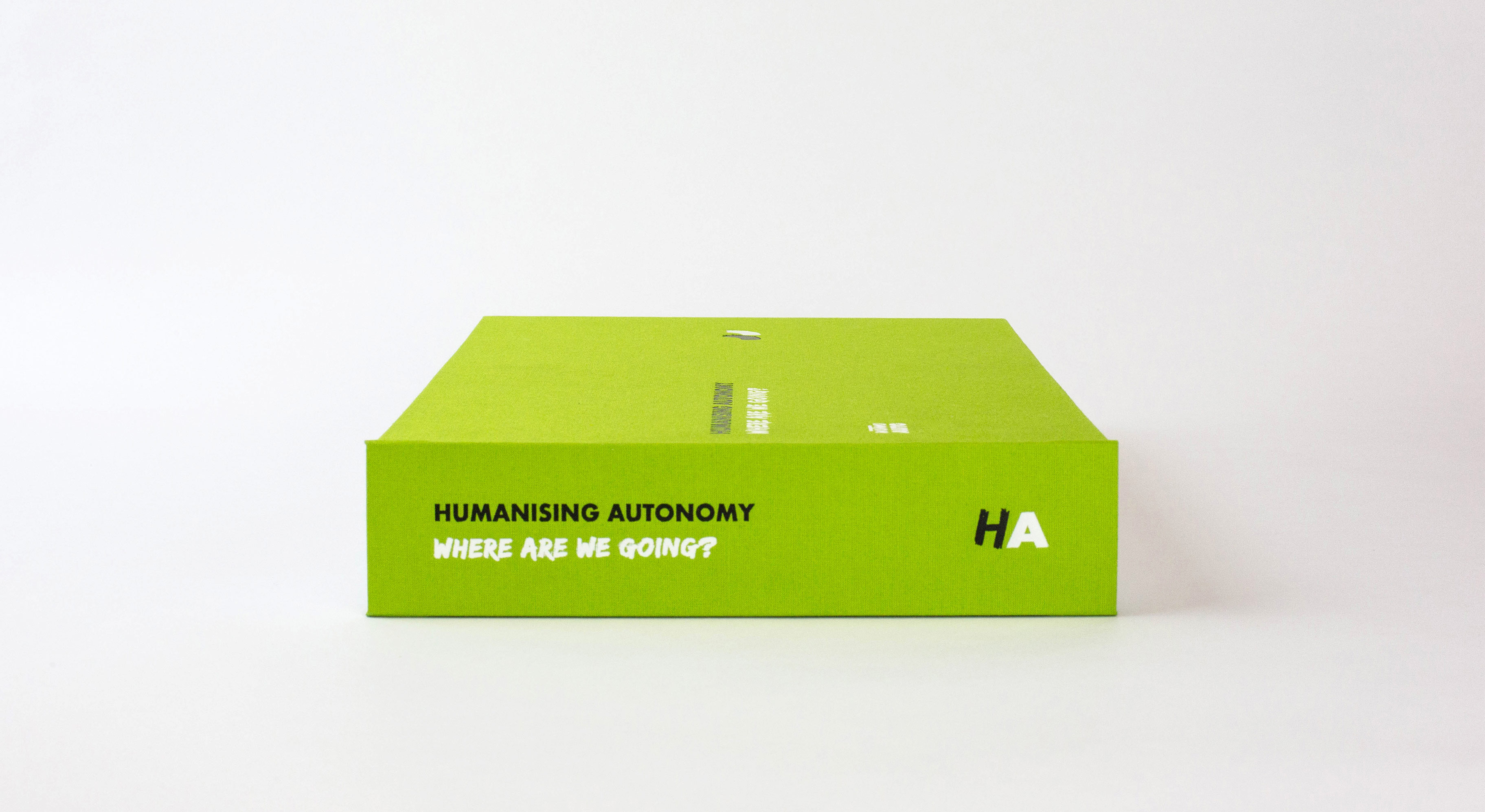
1. People will mess everything up (p.12)
Mobility is a fundamental human need and, as the world of Autonomous Vehicles (AVs) spawns new technologies, companies and offerings, the industry would do well to remember: designing for humans is a sticky business (sometimes literally). The automotive world has only recently begun to see the benefit of designing with human factors in mind, and it’s not just about accessibility and inclusivity, but practical and emotional needs too. This means not only considering drivers and passengers, it means designing for pedestrians and cities alike.
Insight: Drivers do more than just operate the vehicle. When the driver is removed, who is the authority figure, and fulfils those other non-driving tasks, in a driverless vehicle? We must design the authority back into the driverless car for it to be respected.
2. We are not done when the robot is fully autonomous (p.18)
Autonomy is for people, not robots. For AVs to be truly adopted, we must provide greater mobility to people than they had without it. If we fail to consider those on the fringes of the current “automotive user set” (ie children / elderly / disabled) we will not only bias the future against them, we will leave tremendous brand equity and earning potential on the table.
Insight: We cannot assume that because the technology works it can be applied universally. A driverless taxi in one city might seem very safe but our research showed that different geographies are more vulnerable to carjackings and riders may feel less secure without a driver.
3. Speech makes us human (p.86)
Interacting with digital interfaces and AI will only get more challenging as we manage a multitude of new interactions in AVs. Voice interactions are tempting to riders and manufacturers because of their historical place in culture (i.e. KITT or HAL) and potential function as a representative of the car itself. These voice systems will need to be designed carefully to build trust with riders but also strike the right balance between practicality, customer service and authority figure.
Insight: AI can positively shift the passenger’s perception of risk and therefore increase adoption. When we asked if users would trust a “driverless car” versus an “AI driven car”, they were far more comfortable with the latter. Same tech, different perception.
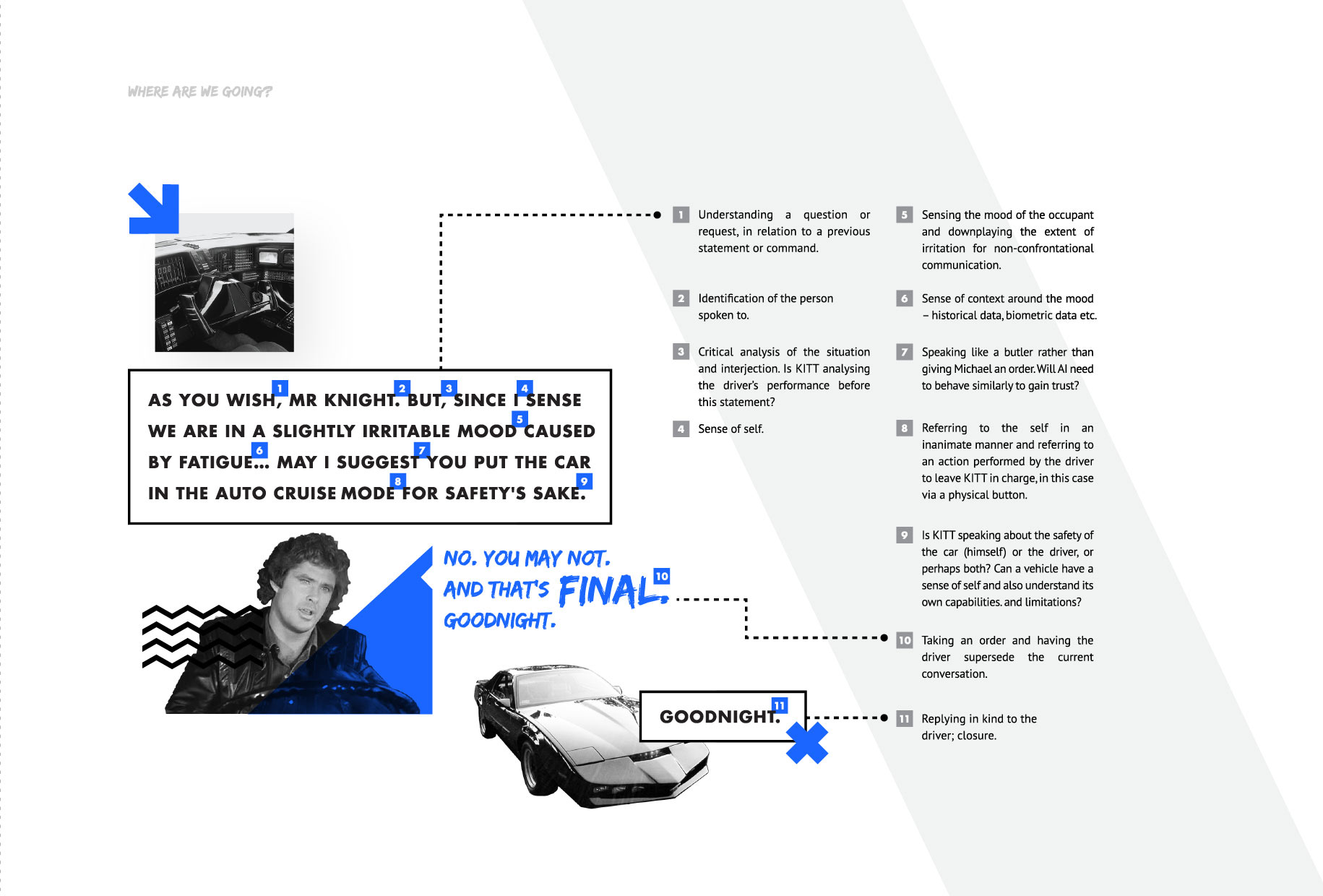
4. Create not for, but with (p.381)
You might think user-testing AV technology is going to be expensive and time consuming. It doesn’t have to be. Low fidelity prototypes can be used to test high-level concepts. Naturally, the fidelity of these tests will increase once these concepts are validated.
Voice interactions are an excellent example of this as the majority of functionality can be implemented without the need for a working AV. Designers can get creative with simulating interactions by “faking it” to see how people react and adapt to new conditions and requirements.
If you wouldn’t build an app without user input, why would you try to build a car without it?
Insight: Augmented Reality (AR), Virtual Reality (VR) or any form of immersive tech (XR) are tools that we use to test autonomous vehicle user experiences. It’s a great way of discovering actual user needs; “If I had asked people what they wanted, they would have said faster horses.” - Not Henry Ford.
5. Most does not mean all (p.179)
AVs (like any system) should be designed from the ground up to be inclusive. Right now, AV companies are designing for most people.
People with disabilities are being left out (how do they get in/out of the car?). The elderly are being left out (how to interact when they haven’t used touch or voice interactions?). Pregnant mothers are being left out (will new seat positions be safe in impact scenarios?). Children are being left out (how will we design interfaces for an entirely new mobility generation?).
Most does not mean all.
Insight: Take a look at autonomous vehicles today and you’ll notice they are missing their wing (side) mirrors. However, we found that the blind rely on these to orient themselves around the vehicle and locate the door. We developed our own concept car, named the Roo, which caters for this need amongst many others we uncovered during our user research.

6. Build on the heritage (p.58)
Auto manufacturers have a tremendous opportunity to build on their heritage. This brand equity among potential riders could give them an edge versus newcomers to the industry.
In the future, customers won’t choose a car based on it’s horsepower, they will choose a vehicle or service offering based on the tangibles and intangibles of the brand offering them. Further, the physical expressions of the vehicle (friendly vs. aggressive vs. polite) will become expressions of brand.
Insight: OEMs can embrace Gen X’s desires for the car and Gen Z’s love of tech. The challenge will lie in how OEMs translate their brand heritage into features, functions and experiences for riders in AVs - this will give them the edge over the newcomers.

7. OEMs will become Original Experience Manufacturers (p.299)
This will not be easy. OEMs need to create a direct relationship with customers and the places they move through. Winners will be those that combine their heritage with emotional intelligence and deep insight into how humans will behave.
As vehicles master fully autonomous travel and riders “lean back” to relax, they will expect the vehicle to understand them at a far deeper level. Can it prioritise safer routes when picking up children? Can it deliver relevant content during a 13, 43 or 103 min drive? Can it adjust the A/C based on body temperature? As consumer choice shifts focus to experiences, car makers will need to transform from original equipment manufacturers (OEMs) to original experience manufacturers.
Insight: Who did you fly with last? United Airlines. What plane was it? No answer? Exactly. We remember brands as service experiences. Ease of booking, price, vehicle cleanliness and even the route chosen are what we remember.
8. Robots need service design (p.93)
We as people develop our own communication with one another and nuanced interactions with objects around us. One example comes in the form of a pedestrian in a crosswalk. Today, the pedestrian makes eye contact with the driver, and that driver may wave or flash their lights to instruct the pedestrian to cross. The pedestrian will then naturally thank the driver, often acknowledged in return, closing the experience.
We need to look at natural human-to-human interactions to design entirely new, yet familiar, patterns for robots-to-human communication.
Insight: In this case, the pedestrian may still like to thank the AV, so the AV should in turn acknowledge this gesture, closing the experience as before, while also establishing a respectful robot-to-human relationship.
9. The “this or that, life and death” scenario is a distraction (p.232)
The debate over who an AV chooses in a life or death situation, known as “The Trolley Problem,” is a distraction. Technology will advance so far that these situations will be incredibly rare. In fact, calling AVs road safe before this point is folly.
We need to keep the “morality pyramid” (described by Kieran Laird) top of mind and remember to design for the far more numerous and mundane day-to-day moral decisions like when to let a bicyclist pass, when to stop for pedestrians and when to pass the car in front of you.
Everyone loses when the entire AV conversation centers on one extremely rare scenario.
Insight: We propose a new “Moral Code of Conduct” - a set of rules that are both safe and empathetic to nuanced human behaviour. For example, the autonomous car sounding its horn (human behaviour) to a driver not moving after a light turns green, but only when it knows, through its various data sources, that it is safe to do so.
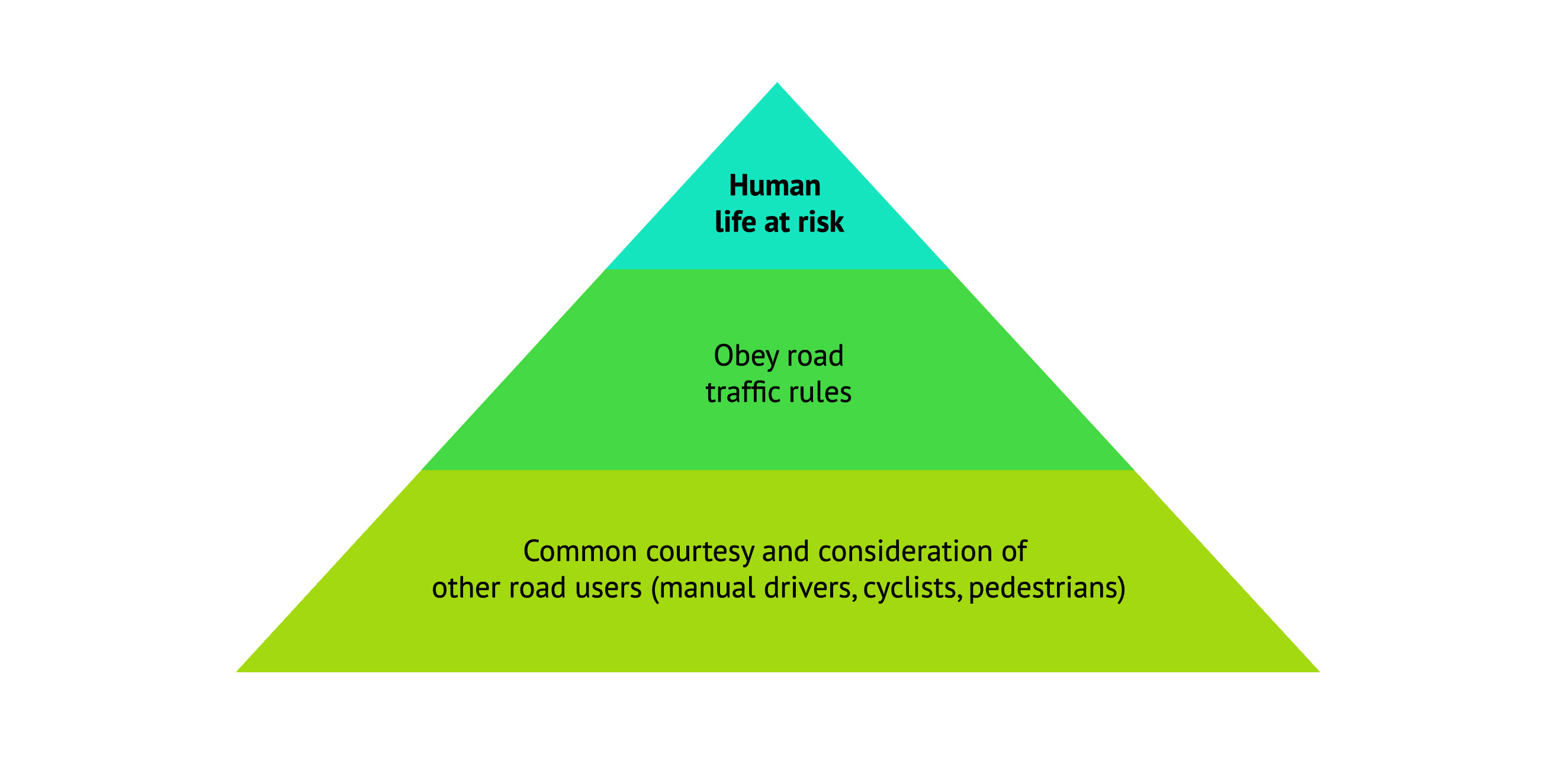
10. In-car jacuzzis? Don’t believe the hype (p.155)
AV designers are less restricted by traditional in-car seat layouts, regulation or screen locations. True, we have a relatively blank slate inside vehicles but this is not an excuse to ignore the two primary needs in travel: purpose driven interior layouts and sensible ergonomics. Interior design needs to be based on real human needs, not “Pimp my ride.”
Perhaps driverless taxis in cities will be designed for optimum occupancy and efficient entry and exit while leisure vehicles allow 180 degree turning for one-on-one conversations. Screens should morph away from the dashboard and into carefully designed systems that address real human needs like incident feedback (why did the car stop suddenly?), trip progress, rider trust and personal space.
Insight: Sharing a vehicle with strangers is awkward enough and our research shows that discomfort is elevated in driverless cars. We propose a new flexible system that would allow for two opposing benches (left), with everyone facing inward, for times of conversation and a central bench (right), with everyone facing outward, to create perceived personal space for strangers traveling together.
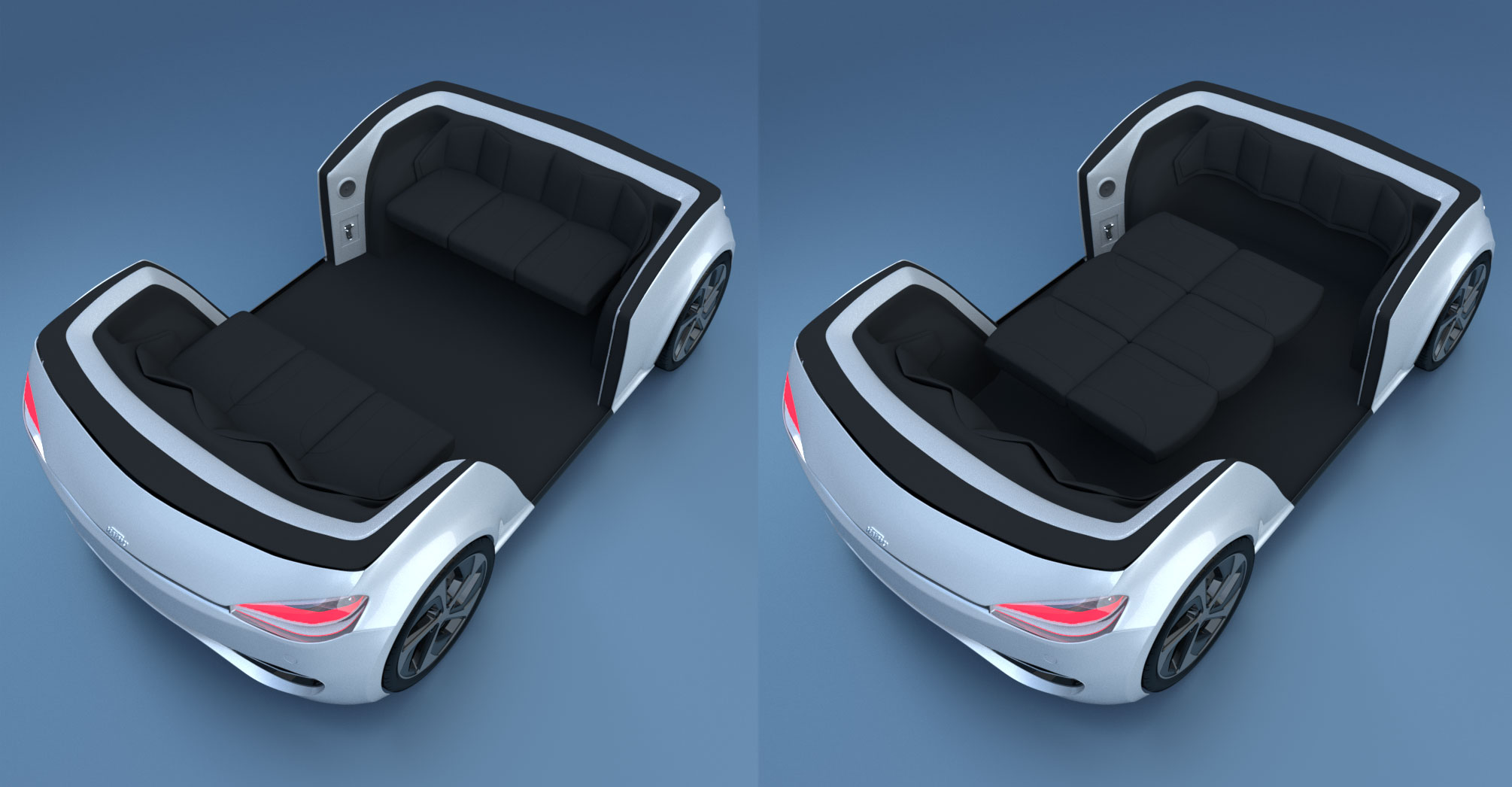
11. People will have sex in AVs (p.328)
Once cars drive themselves, we’re going to have a lot of free time on the road. And, most brands seem to think we’re going to fill our time the way we do with other non-driving transit modes like trains and planes. We cannot assume rider behavior in different forms of transit will be true in AVs.
We’d be remiss to ignore the heritage of sex and cars in culture and a survey by the Auto Service Center ranked sex as a top 10 “thing to do” in an AV. There are local legal restrictions about exposure but when you’ve removed a taxi driver, improved privacy, and designed more ergonomic interiors… people are going to do what they do.
Insight: When designing for AVs we can ignore sex, make it easier or make it more difficult. But, with a human-centered design approach, we have to discuss it. We coined the term “Last Mile Club” in our book - the “Mile High Club” of the driverless car world, let’s see if it catches on!
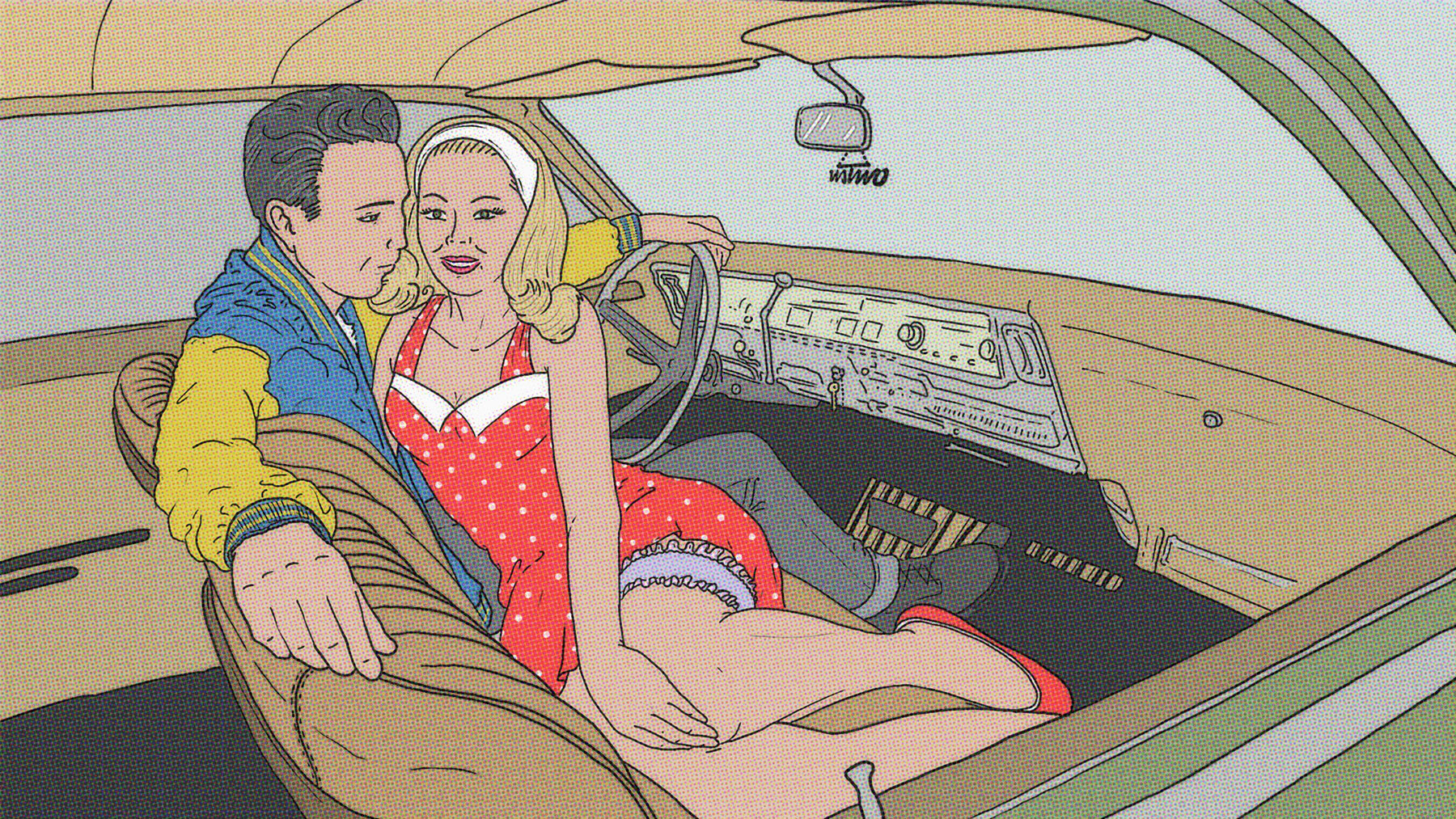
12. AVs will be more than a vehicle (p.508)
AVs will prove to be a great mobility service provider but their potential is far greater. Imagine today’s manually driven car is the Nokia 8310 of the 1990s. When the smartphone came out, it was no more than just a device that could be used to call or text your friends, or surf the web. Today the iPhone has created a true marketplace of its own making, giving birth to all new companies worth billions.
The AV will bring in the same revolution, a platform and a marketplace for all new weird and wonderful things, potentially worth trillions.
Insight: The next macro-social trend that we predict will center around eliminating waste. For example, Airbnb and Lynk & Co allow us to share our homes and cars respectively while we’re not using them.
